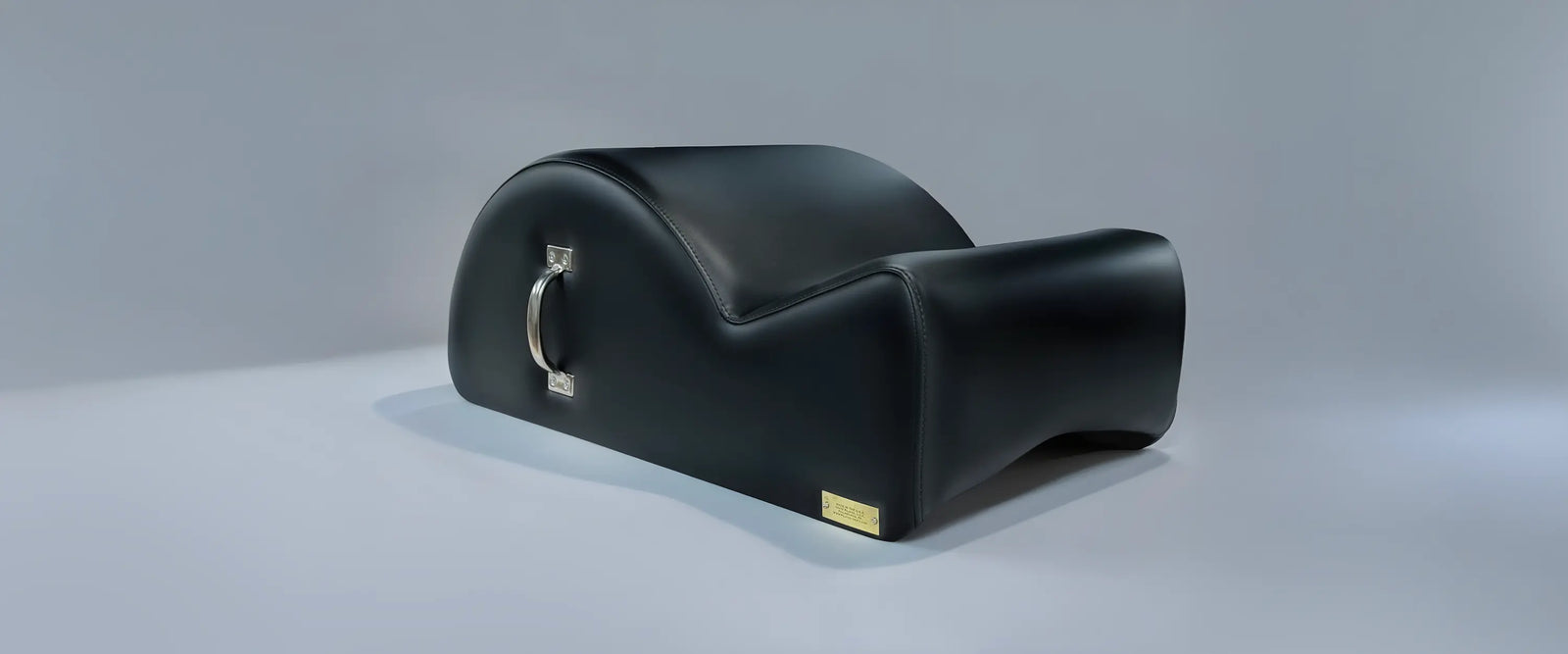Instant shipping quotes now provided at checkout for all 50 states.
Instant shipping quotes now provided at checkout for all 50 states.
The Enduring Power of the Spine Corrector
July 09, 2025

The Spine Corrector holds a vital place in the Pilates method. Its purpose is to restore the natural curves of the spine, develop functional core strength, and open the chest in ways that support alignment and mobility.
The Spine Corrector is a foundational tool for spinal health and strength. It allows for a range of movement that promotes spinal articulation, pelvic control, and shoulder organization.
Why the Spine Corrector Matters in the Pilates Method
The Spine Corrector is one of the most effective and surprisingly challenging apparatuses for developing alignment awareness and stability. Each movement performed on the Spine Corrector reveals how much control and precision the Pilates method requires.
With no springs to rely on, the Spine Corrector challenges the body to create its own resistance from the powerhouse and across the spine. Subtle shifts in balance and alignment are amplified, making it clear when a movement is truly precise or not.
- Expose imbalances and movement habits
- Deepen understanding of spinal mechanics
- Strengthen the core without compensation
- Reinforce control through the entire range of motion
Examples of Exercises Practiced on the Spine Corrector
The Spine Corrector challenges practitioners to move with control, intention, and precision. Below are exercises commonly practiced on the Spine Corrector, each one designed to reveal imbalances, strengthen the powerhouse, and restore natural spinal movement.
One of the hallmark exercises for spinal mobility, Swan emphasizes spinal extension, chest opening, and integration of the upper and lower back. The curve of the barrel supports the thoracic spine, allowing the practitioner to extend safely without compressing the low back.
Beginning with the pelvis grounded on the arc, legs extended, and arms reaching forward, the practitioner lifts the torso in one long, smooth arc. As the chest opens and the back lengthens, the shoulders remain stable, and the neck follows the line of the spine. This exercise builds strength in the back extensors and improves posture by reversing the forward slump common in daily life.
Side Sit-Ups develop oblique strength and lateral stability. With one hip grounded on the barrel, legs extended and stacked, the practitioner lifts and lowers the torso using core control avoiding collapse or overuse of the neck.
This exercise challenges the deep abdominals, promotes symmetry across both sides of the body, and highlights any imbalance in side-to-side strength. It’s a true test of control and alignment.
Building from mat repertoire, Scissors and Bicycle on the Spine Corrector increase the challenge of coordination, core control, and hamstring flexibility. The practitioner begins supine over the barrel with the pelvis stabilized and legs extended overhead. One leg is lowered toward the floor while the other lifts and reaches, switching with precision and breath.
These exercises stretch the hip flexors, activate the powerhouse, and teach dynamic pelvic stability. With the barrel supporting the lower spine, the focus can remain on form and flow rather than strain.
The Shoulder Bridge on the Spine Corrector builds articulation, hamstring engagement, and deep glute activation. By lifting the hips into bridge from a supported position, practitioners can feel the sequential movement of the spine and learn how to lengthen through the front of the hips without compressing the lower back.
The curve of the barrel offers feedback, ensuring that each vertebra participates in the movement. It’s a bridge that builds both strength and awareness.
How the Spine Corrector Continuously Teaches
The Gratz Spine Corrector teaches through challenge. It invites you to slow down, focus, and move with intention. Without springs, there’s nothing to hold you but your own control and that’s where the work begins.
This is what makes it a favorite among Pilates instructors: it strips movement to its essence. Each exercise practiced on the Spine Corrector is an opportunity to organize the body against gravity, refine internal lift, and awaken the postural muscles that often go overlooked.
Leave a comment
Community
Recent Articles
-
January Is Here: How Classical Pilates Studio Owners Can Turn Motivation Into Sustainable Growth
January 06, 2026
-
December Apparatus of the Month
December 30, 2025
-
Inside Gratz Quality Assurance: A Year of Precision, Process, and Progress
December 30, 2025
-
Gratz Equipped Studios: Preserving the Classical Pilates Method
December 19, 2025
-
December Is When Next Year's Success Gets Decided
December 10, 2025

